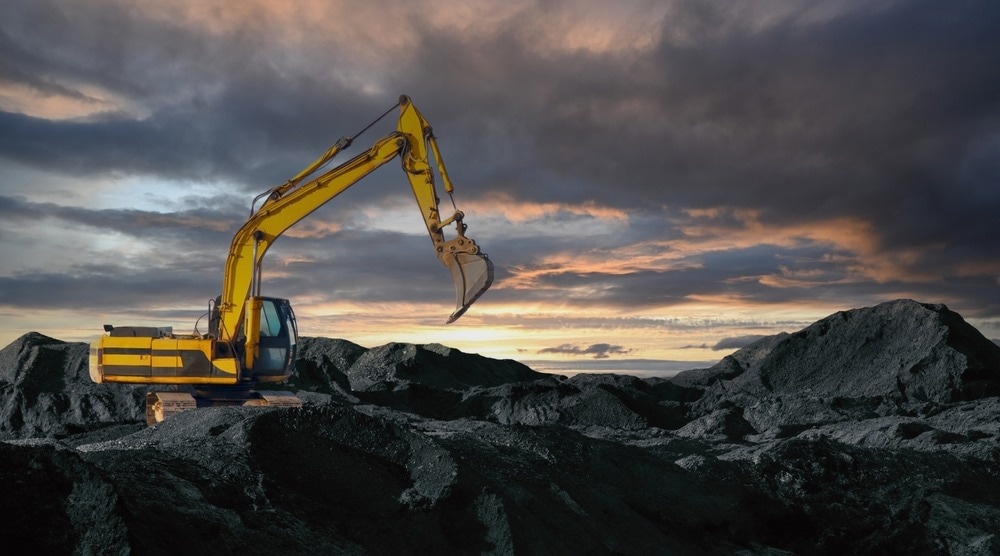In a recent article published in the journal Scientific Reports, researchers presented a comprehensive study on gas flow dynamics in coal seams during gas extraction, particularly under the influence of mining disturbances. The research is motivated by the need to enhance gas extraction efficiency while minimizing the risks associated with gas emissions, which can lead to environmental pollution and safety hazards in mining operations.

Image Credit: Maksim Safaniuk/Shutterstock.com
The study employs a fluid-structure coupling model to provide a theoretical foundation for optimizing drainage borehole arrangements and improving overall gas extraction strategies. The findings are expected to contribute significantly to understanding gas behavior in coal seams, which is crucial for effective mining practices.
Background
Coal is a dual-porosity medium comprising pores and fractures that facilitate gas storage and movement. Its unique properties, including its high internal surface area and strong adsorption capacity, make it a significant reservoir for gas. However, coal's mechanical properties, such as brittleness and sensitivity to stress, complicate the gas extraction process.
When the equilibrium of gas pressure within the coal matrix is disrupted, gas migrates from the matrix to the fractures, leading to potential flow in the coal seam. Understanding the interactions between gas pressure, stress, and the structural integrity of coal is essential for predicting gas behavior during extraction. Previous studies have laid the groundwork for fluid-solid coupling models that account for these interactions, but further exploration is necessary to refine these models and enhance their predictive capabilities.
The Current Study
The study employs numerical simulations based on a fluid-structure coupling model to analyze gas flow dynamics in coal seams during extraction. The model incorporates various dimensions—point, line, plane, and volume—to provide a comprehensive view of gas pressure variations. The researchers developed a stress field equation for solid deformation and gas transport, incorporating gas pressure, stress, adsorption, and desorption factors.
The study includes a gas migration equation in the matrix and a gas flow equation in fractures. These equations are crucial for simulating the interactions between gas pressure and the mechanical properties of coal during the extraction process. The numerical simulations were conducted for 15 days to capture the spatiotemporal evolution of gas pressures in response to mining disturbances. The researchers strategically positioned measurement points around the borehole to monitor gas pressure changes, allowing for a detailed analysis of pressure variations in pores and fractures.
Results and Discussion
The numerical simulation results reveal significant insights into the behavior of gas pressures during the extraction process. The study identifies distinct patterns of gas pressure evolution in response to mining disturbances, highlighting the importance of understanding these dynamics for effective gas extraction. The findings indicate that gas pressures in the coal seam exhibit notable variations over time, influenced by the proximity to the borehole and the extent of mining-induced stress concentrations.
The analysis shows that during the initial stages of gas extraction, gas pressure near the borehole rapidly declines, which is attributed to the immediate effects of mining disturbances. As extraction continues, the pressure in the surrounding coal seam begins to stabilize, although fluctuations remain evident due to ongoing stress redistribution. The study emphasizes considering these spatiotemporal changes when designing drainage boreholes and planning extraction strategies.
Furthermore, the comparative analysis of gas pressures in pores and fractures reveals that gas migration is significantly affected by the structural characteristics of the coal seam. The results suggest that optimizing borehole placement and extraction techniques can enhance gas recovery while mitigating the risks of gas outbursts and environmental impacts. The findings contribute to a deeper understanding of the complex interactions between gas flow and coal mechanics, providing valuable insights for future research and practical applications in mining engineering.
Conclusion
The study successfully employs a fluid-structure coupling model to analyze gas flow dynamics in coal seams during extraction under mining disturbances. The numerical simulations provide a detailed understanding of the spatiotemporal evolution of gas pressures, highlighting the critical role of mining-induced stress in influencing gas behavior.
The findings underscore the importance of optimizing drainage borehole arrangements to enhance gas extraction efficiency and reduce the risks associated with gas emissions. This research lays the groundwork for future studies aimed at refining gas extraction techniques and improving safety measures in mining operations. By advancing the understanding of gas flow dynamics in coal seams, the study contributes to the development of more effective and sustainable mining practices.
Source:
Chen Y., Chu T., et al. (2024). Spatiotemporal evolutions of gas pressures in coal seam during gas extraction under mining disturbance. Scientific Reports 14, 30253. DOI: 10.1038/s41598-024-81447-2, https://www.nature.com/articles/s41598-024-81447-2